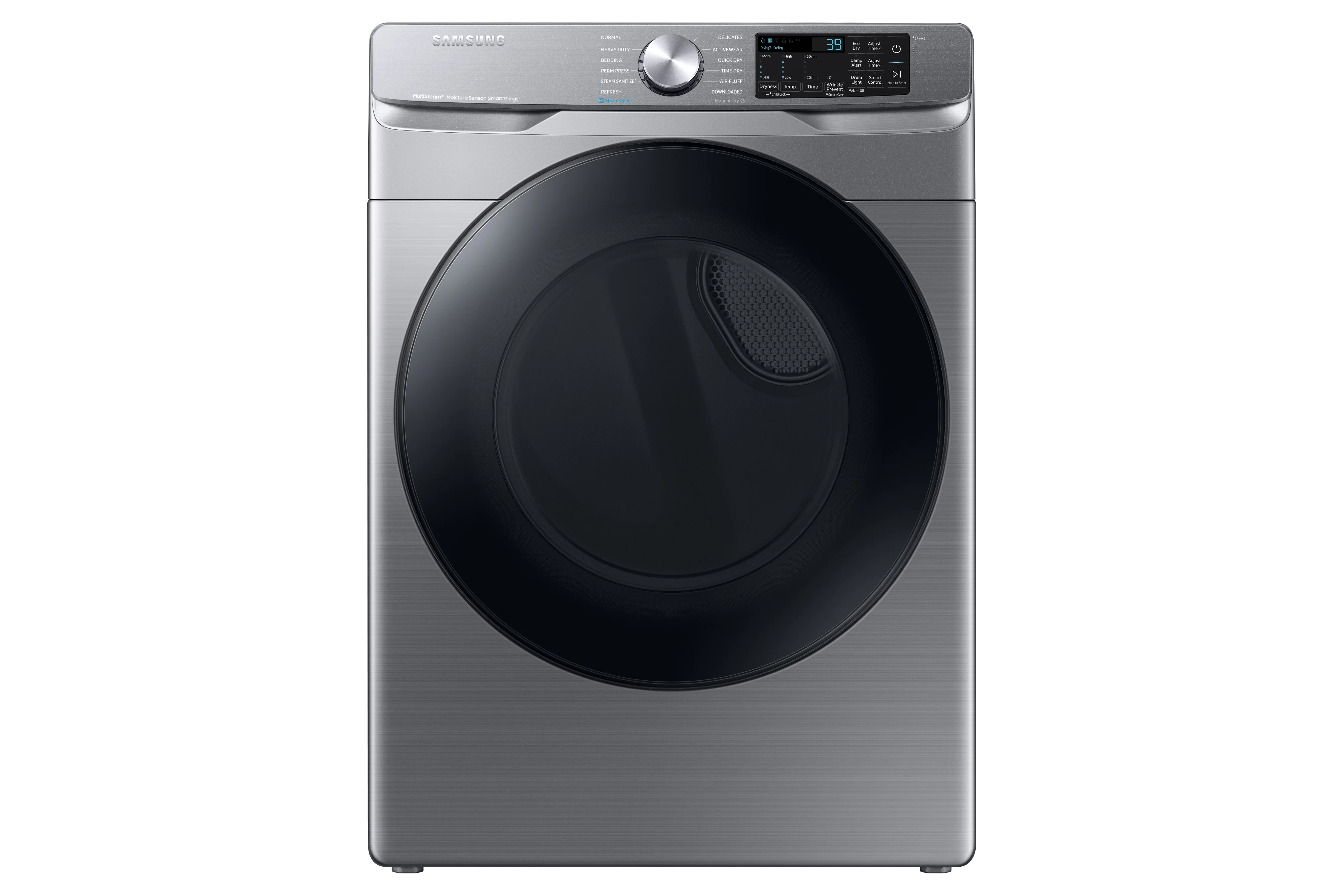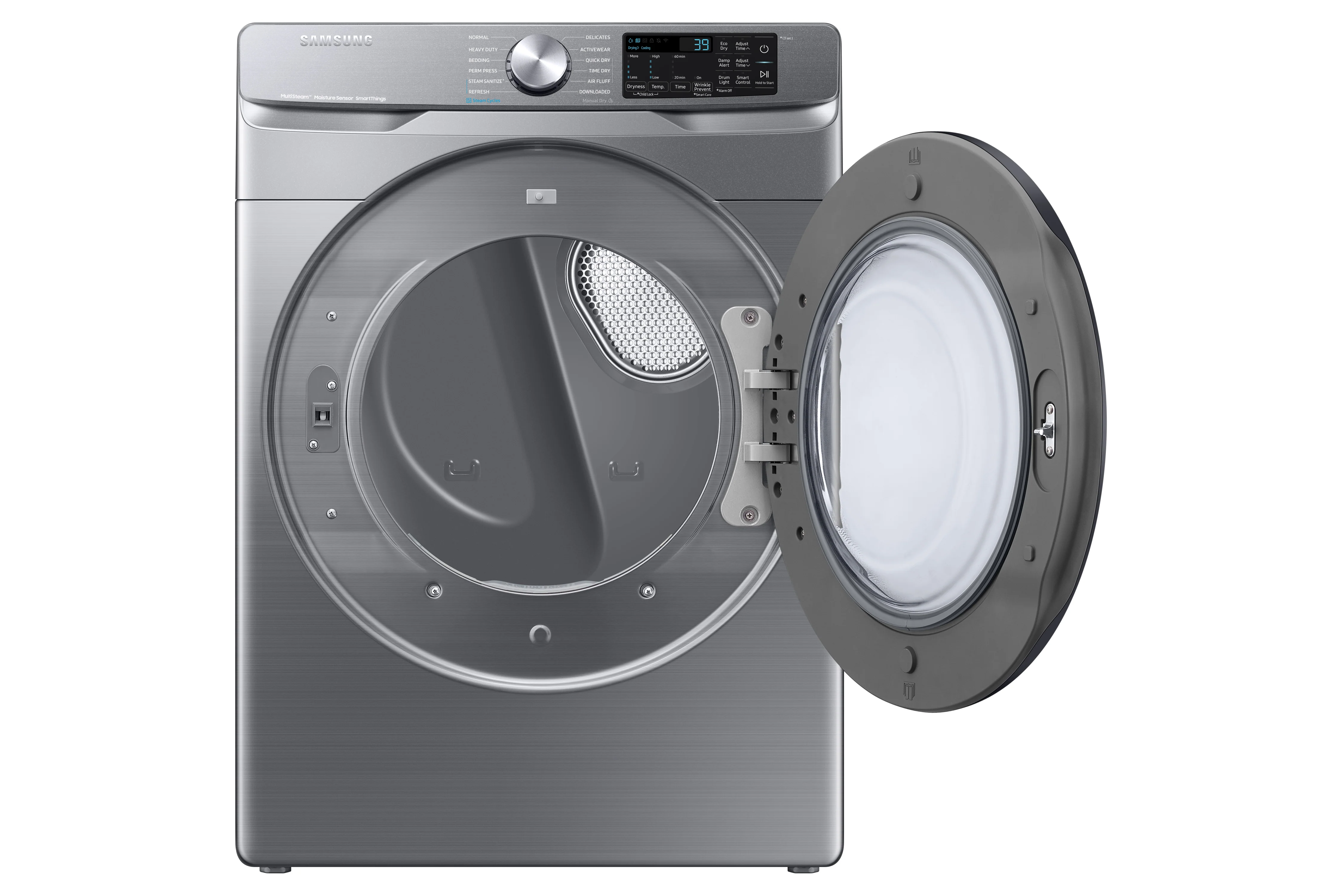A dryer is an essential appliance in many households. Do you ever wonder how your dryer works? Have you thought about the components that come together to create this machine? There's no need to be puzzled any longer! This article explores how a typical dryer works and discusses some of its parts for a better understanding of what goes on inside your dryer. We will also discuss the cycle of heat and air circulation, and how this helps remove moisture from your clothes. The specific questions we will answer include:
- What Are the Different Parts of a Dryer?
- How Do Dryers Work?
- How Do Ventless Dryers Work?
- FAQs About How Dryers Work
What Are the Different Parts of a Dryer?
We need to know the parts of a dryer before delving into how they work together to dry clothes. This can also help you troubleshoot any issues that may arise.
Dryers come in two main types: gas dryers and electric dryers. While the internal components of both types are similar, there are some differences between the two. Knowing the different parts of a dryer can help you identify any problems and decide whether to repair or replace the appliance.
The parts of a dryer can be divided into two categories: internal and external.
External Parts include:
Dryer Feet - These are the four adjustable legs located at the bottom of the dryer. They help keep the dryer stable and level, preventing it from moving around during the drying cycle. The feet should be adjusted to ensure that the dryer remains level, which is essential for proper air circulation and efficient drying.
Dryer bulb - The dryer bulb is located inside the dryer opening. It illuminates the dryer’s interior when the dryer door is open.
Dryer lint screen - This is mesh-like material located either on the exterior of the dryer or inside the door opening, depending on the model. Its purpose is to collect lint and debris as it passes through the dryer vent. The lint screen should be checked and cleaned before each use, as a clogged screen can reduce the dryer’s efficiency.
Dryer Vent - The dryer vent is located on the back of the dryer and is responsible for exhausting hot air and moisture out of the dryer. The vent should be kept clean and clear of any lint or debris to maximize dryer efficiency
Internal Parts
The internal parts of a dryer are responsible for the actual drying process.
Heating element
The heating element is typically a coiled electric wire. When it is energized, it produces heat that is circulated by the blower, which is responsible for circulating the heated air through the drum and out the exhaust vent.
The blower fan
It is responsible for circulating the air through the dryer. The fan helps move heated air around the clothes, which helps evaporate moisture and leave the clothes dry.
Thermostat
The thermostat regulates the dryer temperature. It can be adjusted to ensure that the desired temperature is maintained and that clothes are not damaged by excessive heat.
The timer
It controls the length of the cycle. The timer should be set to the desired cycle time to ensure that the clothes are properly dried.
Note: Gas-powered dryers also have a gas line connection.
How Do Dryers Work?
Dryers use three basic principles to function: heat, airflow, and tumbling. Air flows over wet clothes as they tumble inside the drum, which has a heating element at its base. The hot air heats the clothes until all moisture evaporates and leaves behind dry clothing ready for wearing or storage.
The following is an overview of the steps involved in the drying process.
Step 1: Heating
The first step in the drying process is heating the air. The dryer uses a heating element to generate hot air, which is then circulated through the drum. The air is heated to the desired temperature, which is usually around 150-180 degrees Fahrenheit (65.5-82.2 degrees Celsius). Once the air is heated, the blower fan circulates it throughout the drum.
Step 2: Tumbling
The second step is tumbling the clothes. The dryer drum rotates, which helps evenly distribute hot air and remove moisture from the clothes. This also helps fluff the clothes and reduce wrinkles.
Step 3: Venting
Next, the moisture from the clothes is vented out of the dryer. Hot air is expelled through the exhaust vent, which helps remove moisture from the clothes.
Step 4: Timing
Finally, the dryer timer is used to control the cycle length. It is important to ensure that it is set to the desired cycle time to ensure that the clothes are properly dried. Once the cycle is complete, the dryer will turn off, and the clothes should be ready to wear.
How Do Ventless Dryers Work?
Ventless dryers, also known as condensation dryers, are a type of dryer that is becoming increasingly popular due to their energy efficiency and convenience. They are designed to be more efficient than traditional vented dryers, as they do not require an external vent to exhaust hot air and moisture.
Instead, they use a condensation process to remove moisture from the clothes and vent hot air back into the room. The condensation process works by using a combination of heat and air movement to evaporate moisture from the clothes.
The dryer drum is powered by a motor, which is responsible for rotating the drum. As the drum rotates, it helps evenly distribute heat and air and remove moisture from the clothes. The air is then circulated over the heating element, which transfers the heat to the air and helps evaporate moisture. Next, it is passed through a cooling chamber, where it is cooled by a fan. This helps reduce the air temperature, which causes the moisture in the air to condense and collect on the walls of the cooling chamber. The condensed moisture is then collected in a reservoir, and dry air is passed back into the room.
Ventless dryers are a great option for those living in small spaces or apartments, as they do not occupy a lot of space. They are also more energy efficient than traditional vented dryers. Finally, they are generally quieter than vented dryers, as there is no need for an external vent.
FAQs About How Dryers Work
How do gas dryers work?
Gas dryers use natural gas or propane to generate heat. The gas dryer works by using a burner, which is responsible for generating heat. The burner is connected to a gas line, which supplies a steady flow of natural gas or propane. The heat generated by the burner is then circulated through the clothes in the dryer, helping evaporate moisture and leave the clothes dry. It is then circulated through the heating element, which transfers heat to the air and helps evaporate moisture.
Gas dryers are a great option for those looking for an energy-efficient option. They are also an excellent choice for those living in areas where electricity is expensive or unreliable. Additionally, gas dryers are typically more durable than electric dryers.
How do dryers know when clothes are dry?
Dryers are equipped with a variety of sensors and timers that determine when the clothes are dry. The most common type of sensor is the moisture sensor, which measures the amount of moisture in the air. As the clothes dry, the moisture in the air decreases, and the sensor will detect this change in moisture levels and signal the dryer to stop.
Most dryers also have a timer, which is used to determine the length of the drying cycle. The timer can be adjusted to the desired cycle time, which helps ensure that clothes are properly dried. The timer will signal the dryer to stop when the cycle is complete.
Finally, some dryers also have a temperature sensor, which is used to regulate the temperature within the dryer. The sensor ensures that clothes are not damaged by excessive heat, as it will signal the dryer to stop if the temperature gets too high. This ensures that clothes are properly dried and helps prevents damage.
Where does the water go in a dryer?
Water in a dryer is removed through a combination of heat and air movement. The dryer drum is powered by a motor, which is responsible for rotating the drum. As the drum rotates, it helps evenly distribute the heat and air and remove moisture from clothes.
The air is then circulated over the heating element, which transfers the heat to the air and helps evaporate moisture. This air is passed through a cooling chamber and cooled by a fan. Condensed moisture is collected in a reservoir, and the dry air is passed back into the room.
How does air get into a dryer?
Air is circulated through a dryer using a blower fan. The fan helps move heated air around the clothes, which helps evaporate moisture and leave clothes dry. The fan is powered by a motor, which is responsible for rotating the fan. The fan then draws air from the room and circulates it through the dryer. The air is circulated through the heating element, which transfers the heat to the air and helps evaporate moisture. The air is then passed through a cooling chamber, where it is cooled by a fan.
Does the dryer require a water hookup?
A water hookup in a dryer is optional because dryers use a combination of heat and air movement to remove moisture and leave clothes feeling refreshed. In some cases, however, a dryer may require a water supply for additional features such as steam cycles or anti-wrinkle settings. However, these features are not necessary for the basic operation of the dryer and do not require a water hookup.
Conclusion
Understanding the mechanics of your appliance is the first step toward proper use and improving efficiency. Properly maintaining each part also maximizes the safety of the appliance. Additionally, it is important to ensure the dryer is used according to the manufacturer’s instructions to ensure that clothes are properly dried and without risk of damage.
With proper care, your dryer can last years. But if you are in the market for a new dryer, check out our selection of dryers for all needs and budgets. As always, do not hesitate to reach out if you need additional assistance.















